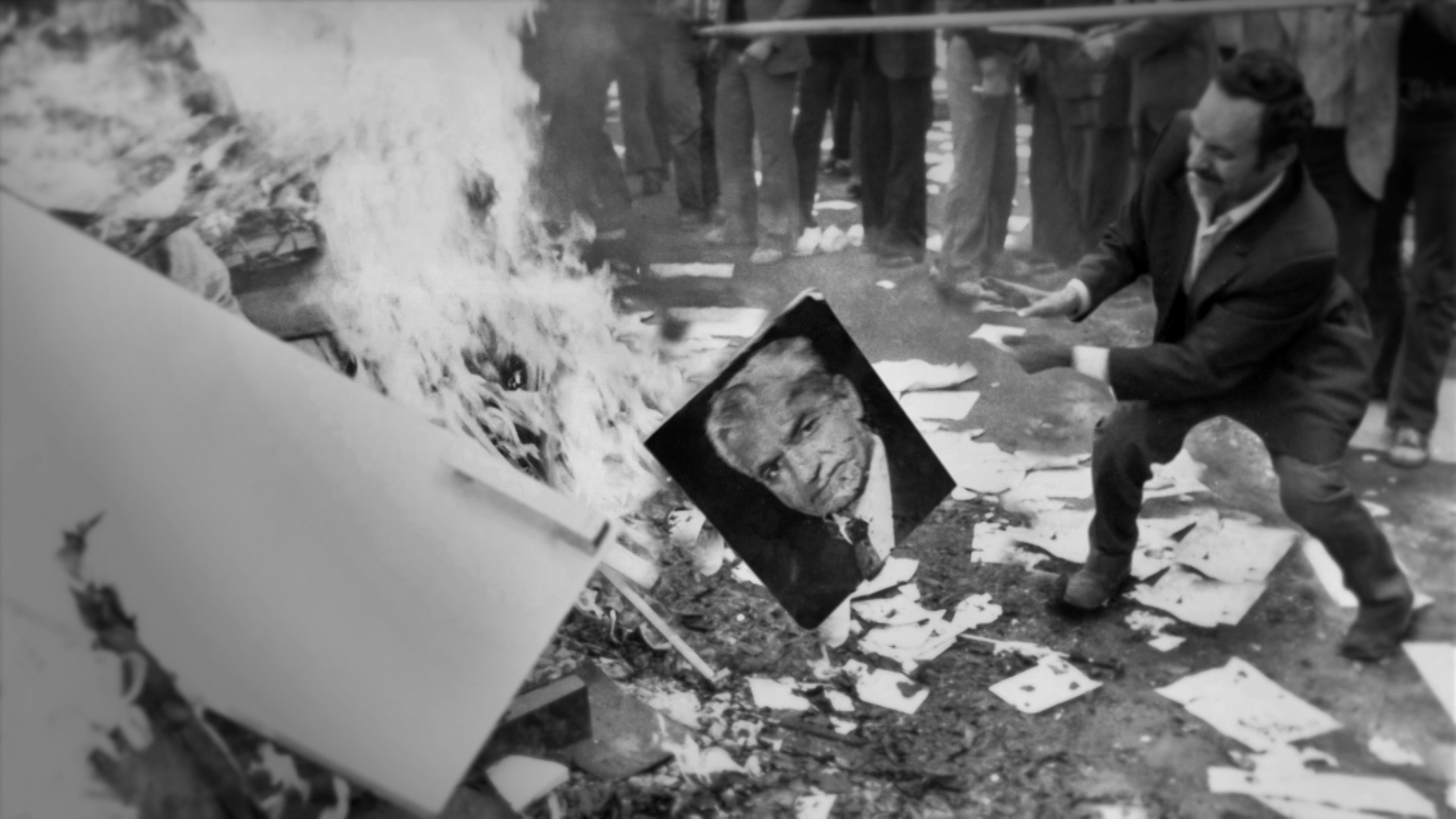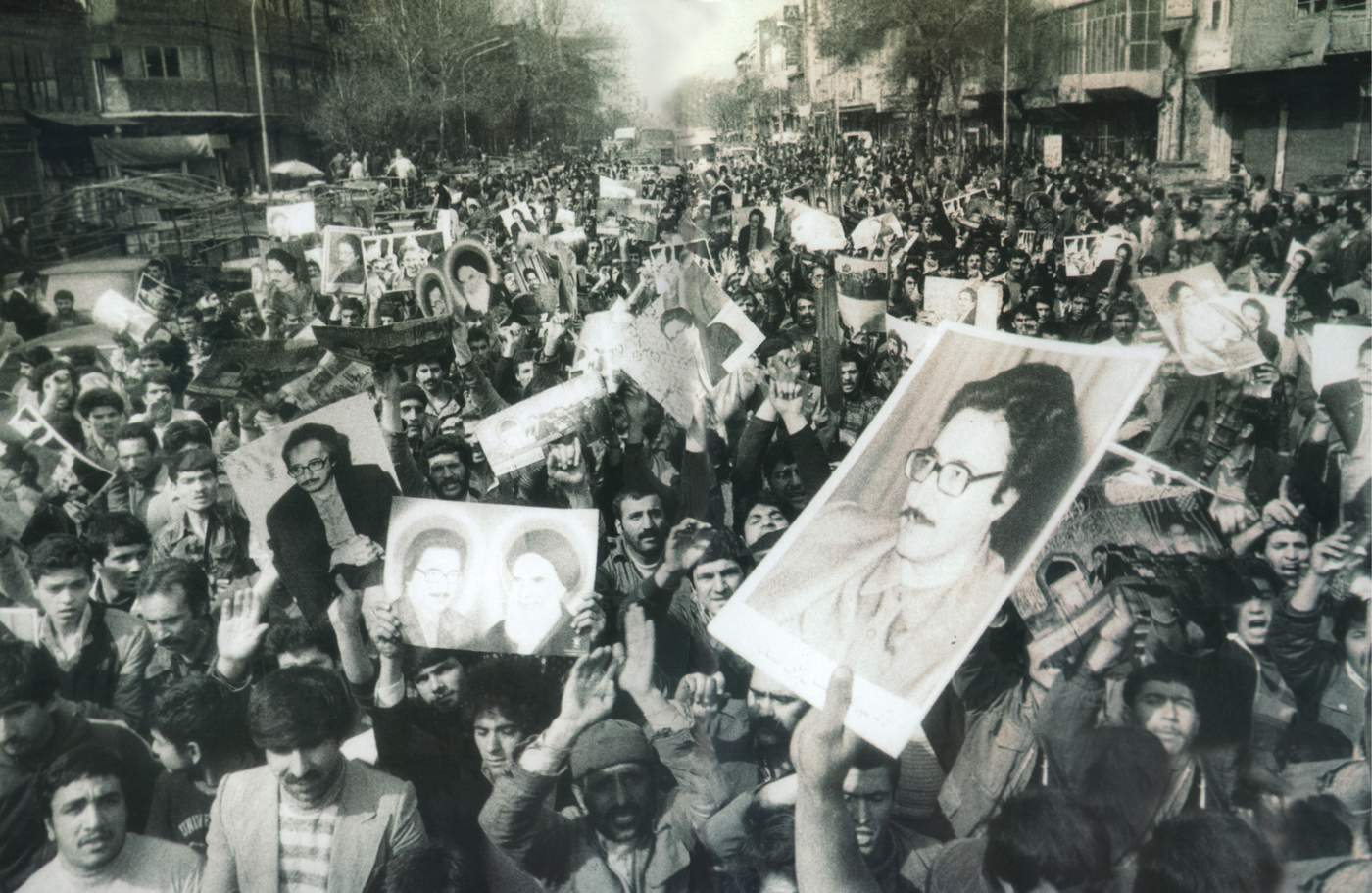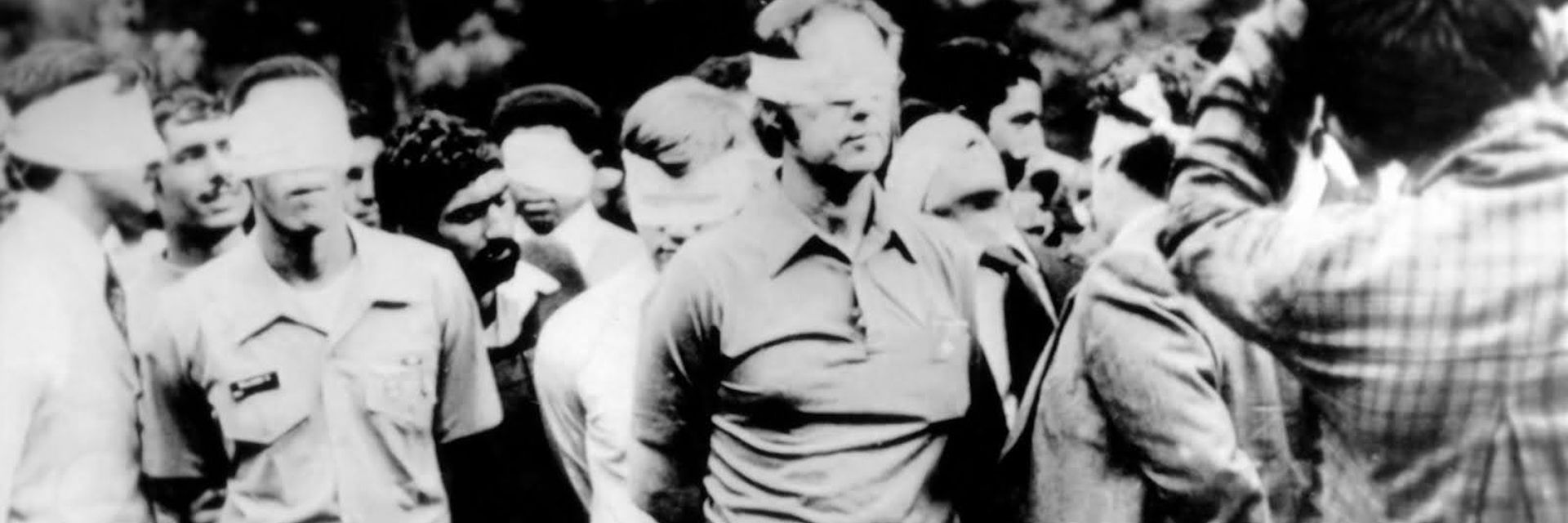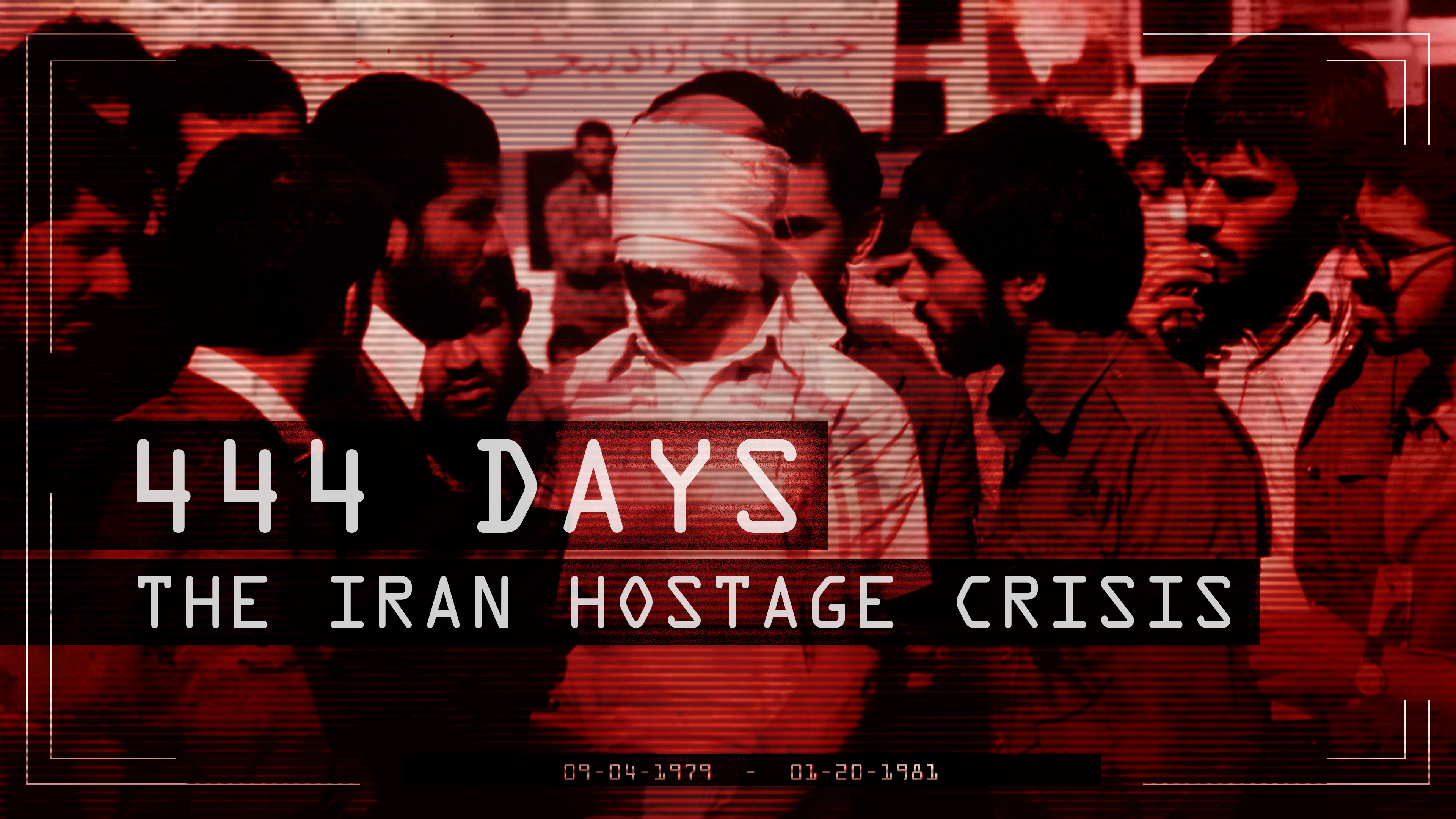Did Ronald Reagan’s 1980 presidential campaign team conspire with the Islamic Republic of Iran to delay the release of American hostages until after the election?
◊
To viewers with a critical eye, the events of January 20, 1981, had really bad optics. Just minutes after Ronald Reagan took the oath of office to become the 40th president of the United States, 52 hostages who had been held in Iran for 444 days were released. The Hostage Crisis, as it was called in the U.S., had been front and center on American television news programs throughout that time. ABC’s Ted Koppel even counted the days, highlighting the specific number since the Americans were taken prisoner at the beginning of his popular news program, Nightline, literally every weeknight.
The crisis coverage was an unavoidable backdrop to the 1980 U.S. presidential campaign between incumbent Jimmy Carter and Reagan, his challenger. Many would say it was the central issue of the contest, and its dramatic resolution seemed almost to be scripted. In fact, the inauguration of President Reagan and the release of the hostages were so well-timed that television networks in the U.S. and abroad showed them unfolding in real-time on a split screen, a novel video technique now ubiquitous in news coverage.
Could it really be that the Iranian government timed the hostage release to coincide with Reagan becoming president? Did the Reagan election team have a hand in delaying the release until this highly charged moment? Reagan supporters were overjoyed by the events, as they seemed to show that the Islamic Republic of Iran was in thrall to the Reagan mystique. Democrats were not persuaded that political forces within the Reagan presidential campaign had not orchestrated the timing of the release.
As CBS News reported, “Though the U.S. and Iran came to an agreement to free the hostages in December 1980, Iran waited till Ronald Reagan was sworn in as president before releasing them. It was a pointed political statement against Carter.” But just how “pointed” was it?
Learn more about the background of the crisis facing President Carter and the American people in 1980.
Did Political Operatives Conspire to Lengthen the Iran Hostage Crisis?
It’s well-known that the Republican team supporting Ronald Reagan for president was fixated on the Iran hostage situation. In fact, Reagan’s campaign manager, William Casey, mentioned his concern to reporters that President Jimmy Carter would use his office to spring some compelling news to the public as an “October surprise” that would tip the election in his favor. It was the first use of this now-famous term.
Casey was an interesting character and a curious choice to run a domestic political campaign. He had worked for the Office of Strategic Services during WWII, where he headed its Secret Intelligence Branch in Europe. Later, he founded the Manhattan Institute, where he worked with foreign governments, including military dictatorships. Domestic policy was not a key part of his extensive portfolio.
Some alleged Casey to be a key player in a Republican plan to use a different but related “surprise” against Carter. To be sure, this allegation is based on suspicion and the accounts of several witnesses, not on documented facts – there is no paper trail. In 1992, U.S. congressional task force hearings in the House of Representatives culminated in findings that “credible evidence” supporting the allegation was absent or “insufficient.” But the reports couldn’t hide the fact that those conclusions did not convince some House members. Representative Mervyn Dymally, a task force member, refused to sign the House report, stating that selective handling of the evidence was used to clear the Reagan campaign from involvement in a plot.
The Senate planned its own hearings on the matter, but they were cut off abruptly in 1991 when a Republican filibuster successfully denied funding for the probe.
While the House report seemed to close the case on the topic, there are those beyond Rep. Dymally who remain unconvinced. In fact, there are numerous statements by people who claim first-hand knowledge that, in fact, there were secret communications from Reagan campaign staff indirectly to the Iranian government. These include self-identified witnesses from both the U.S. and Iran.

An Iranian protester burns a portrait of the former Shah of Iran. (Source: 444 Days: The Iran Hostage Crisis)
Testimony of Two Witnesses: Ben Barnes and Gary Sick
In the United States, a former Democratic lieutenant governor of Texas, Ben Barnes, felt compelled to break a four-decade silence. In 2023, he said that what he knew about Republicans’ behind-the-scenes machinations to delay the hostage release needed to be made public because “history needs to know that this happened.” In July 1980, Barnes accompanied former governor of Texas John Connally, a Democrat-turned-Republican, on a far-reaching tour of the Middle East, visiting Jordan, Syria, Lebanon, Saudi Arabia, Egypt, and Israel.
Connally, who had aspirations for a cabinet position in the Reagan administration, called this trip “strictly private” and never discussed it publicly. Barnes, too, remained silent, but after hearing that former President Carter was near death in February 2023, he spoke out about what he knew: Connally’s reason for the trip was to deliver a stealthy message to Iran that it should not release its hostages before the election – because Reagan would give the Iranians “a better deal.” According to Barnes, Connally personally debriefed William Casey on the results at the end of this trip.
And what was this “better deal”? According to a December 8, 1991, report in The New York Times, Reagan promised that the U.S. would surreptitiously supply the Iranians with arms through an intermediary, Israel. Once Reagan had attained the presidency, arms sales commenced, even though the Reagan Administration was on the record as being staunchly opposed to such an arrangement.
When informed of Barnes’s information, one former hostage, John Limbert, who was a political officer at the American Embassy in Iran, said, “It’s basically just confirmation of what we strongly suspected all along. . . . We should not be surprised about this in American politics – people willing to stoop to anything.”

Supporters of Ayatollah Khomeini show their support in the streets of Tehran. (Source: 444 Days: The Iran Hostage Crisis)
Gary Sick, a Middle East analyst and Democrat who served on the U.S. National Security Council under Presidents Ford, Carter, and, briefly, Reagan, has also weighed in on this covert arms-for-hostages deal. He wrote in 1991 that Reagan’s victory in 1980 was the outcome of a conspiracy to sustain the public’s dissatisfaction with President Carter by delaying until after Election Day the release of American hostages being held in Iran. Further, “for this favor, Iran was rewarded with a substantial supply of arms from Israel.”
“Finally,” he wrote, “it implies a willingness to pursue private, high-risk foreign policy adventures out of sight of the electorate . . . [that are] profoundly antidemocratic.” Sick’s charges may be unable to be corroborated, but his views and those of Ben Barnes entirely support each other.
Abolhassan Banisadr and the Ayatollah’s Shifting Demands
While both Americans who claim to have witnessed suspicious events in 1980 can be doubted because they are Democrats, and thereby partisan, there is one more witness to the October surprise negotiations who is neither a Democrat nor a U.S. citizen.
Abolhassan Banisadr was an Iranian political leader for a while following the Islamic Revolution in 1979. An ally of Ayatollah Ruholla Khomeini and an outspoken critic of the Shah of Iran, Mohammed Reza Pahlavi, Banisadr accompanied Khomeini back to Iran from exile on February 1, 1979, after the Islamic Revolution deposed the Shah, and Pahlavi subsequently fled the country. By the end of the year, Khomeini was declared Iran’s Supreme Leader, the country’s highest-ranking political and religious authority. Khomeini radically shifted his nation’s position from being pro-U.S. to becoming a menacing adversary of American policies, as represented by President Carter.
Once he left Iran, the Shah traveled to a number of nations before entering the U.S. on October 22, 1979, enraging many Iranians. This widespread anger led soon after to a group of Iranian militants and students storming the U.S. Embassy in Tehran on November 4, 1979, and taking all the Americans in the embassy as hostages. A total of 66 Americans were originally taken before 13 African Americans and women were soon released. In addition, one hostage was released for medical reasons, leaving 52 held for the duration of the crisis.
Initially, Khomeini demanded that the U.S. extradite the Shah to Iran, return the wealth he had moved out of the country, and end its interference in Iranian domestic affairs. Later, on July 27, 1980, after departing the U.S., the Shah died of cancer in Egypt. And in September, the Ayatollah shifted and expanded his demands to include unfreezing the Iranian assets held in the United States and lifting the sanctions against Iran. This essentially sent the American negotiating team, headed by Warren Christopher, back to the drawing board and seemed designed to extend the negotiations.

Supporters of Banisadr rally to support his election as president, January 1980. (Source: Public Domain, via Wikimedia Commons)
Banisadr was the first president of the Islamic Republic of Iran, elected in January 1980. However, his presidency was fraught with political strife and opposition from conservative elements within the government, and Banisadr eventually went into hiding, ultimately fleeing Iran in July 1981.
This put Banisadr in a unique position as a Khomeini ally who was ruthlessly hounded out of government and, finally, the country. He played a central role in the first 18 months of Khomeini’s rule. And he claimed that Ronald Reagan’s 1980 presidential campaign colluded with the post-revolution Iranian government to keep U.S. hostages in Iran until after that year’s election.
Banisadr’s 1991 memoir, My Turn to Speak, says that in the spring of 1980, “Americans close to Reagan” had proposed “not a reconciliation between governments but a secret agreement between leaders.” To be fair, Banisadr relied only on his word – and the fact that he had repeated this assertion numerous times since 1980 – to persuade readers of its veracity. And many Americans, not to mention the Congressional task forces, saw fit to accuse Banisadr of opportunism and flights of fancy.
Is the Truth Hostage to Politics?
We are confronted here with people both inside the American government and within the Iranian revolutionary regime who tell remarkably similar stories. And these are not the only unrelated stories to come to public attention in the years following Reagan’s presidency. Both Israeli leader Yitzhak Shamir and Palestinian leader Yasser Arafat corroborated the story during their lifetimes, as have others in highly placed positions in governments in the U.S. and abroad.
So, despite years of official denial, these stories have persisted, taking on a life of their own. Could it be that Ayatollah Khomeini despised President Carter so much that he undermined his own negotiations with the U.S. government, changing the fundamental conditions for the hostages’ release in September 1980? Was there indeed a secret arms-for-hostages deal worked out by Reagan campaign staffers outside official government channels, likely tilting the 1980 presidential election away from Carter and toward Reagan? Well, as we all know, it might be that more than one thing can be true.
Ω
Kevin Martin is Senior Writer and Associate Editor for MagellanTV. A journalist and communications specialist for many years, he writes on various topics, including Art and Culture, Current History, and Space and Astronomy. He is the co-editor of My Body Is Paper: Stories and Poems by Gil Cuadros (City Lights) and resides in Glendale, California.
Title Image: Iranian hostage-takers show blindfolded Americans to the media in front of the U.S. Embassy in Iran. (Source: 444 Days: The Iran Hostage Crisis)


